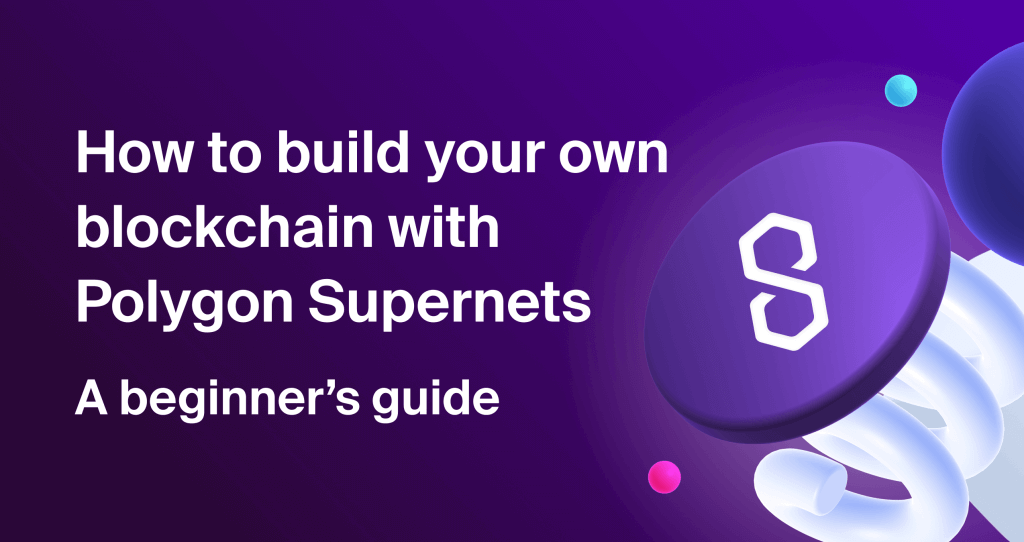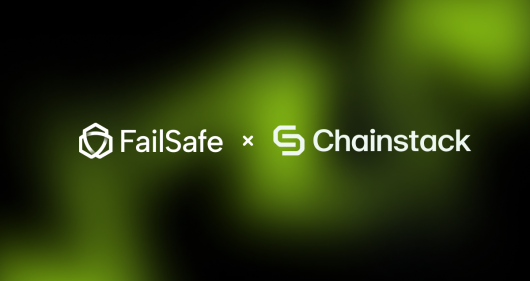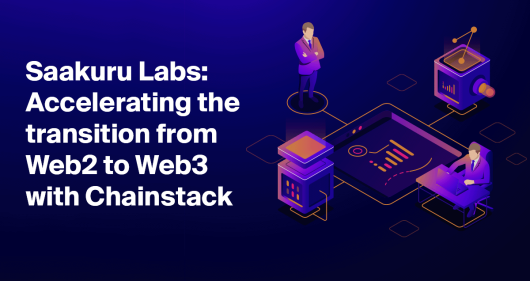How to build your own blockchain with Polygon Supernets: A beginner’s guide

Scalability and throughput have always been the most significant pain points for Web3 developers working with public networks. This is where Polygon Supernets truly shines, offering a crucial feature that solves this dilemma: interoperability.
Polygon Supernets can communicate with other blockchains, enabling seamless transactions across multiple platforms. By combining Ethereum’s security with the versatility of a self-governing blockchain, they have developed a system that can support a vast spectrum of use cases. A Supernet allows you to build your own blockchain network that caters to the needs of your application, enabling you to establish default transaction fees and implement your own gas token.
In this article, we will explore the world of Polygon Supernets and provide a step-by-step guide to creating and deploying your blockchain platform for the first time. First, let’s start by explaining what Supernets are, what they can do, and why they are a game-changer in Web3.
What are Polygon Supernets?
In a nutshell, Polygon Supernets is a network of connected clusters offering various benefits for data management and collaboration. They function as an ecosystem of seamlessly integrated modules that enhance their capabilities as they accumulate. By understanding complex data structures and uncovering previously unseen relationships between data points, these Supernets provide a potent tool for users.
Beyond their inherent utility, Polygon Supernets also enable communication and data sharing among different groups of users. They can exchange messages and value with other Supernets and the Ethereum network, with validators ensuring the network’s security level by participating in the MATIC mainnet.
With tons of potential use cases, many projects have already utilized Polygon Supernets to enhance their capabilities. One recent example is Nubank, a significant fintech company based in the LATAM region. It announced that it is partnering with Polygon and leveraging Polygon Supernets to power its loyalty program with “NuCoin,” its customized blockchain token. As an increasingly vital tool for businesses and individuals looking to manage and understand complex data structures, Polygon Supernets have tremendous potential for mainstream adoption.
Why should I use Polygon Supernets?
If you are tired of dealing with slow, unreliable blockchain networks that fail to meet your specific needs, Polygon Supernets is the answer to your woes. Blockchains weren’t meant to be one-size-fits-all, and a Supernet lets you create a personalized blockchain that you can fine-tune and infinitely customize.
Polygon Supernets are custom-designed to provide a superior installation experience and offer improved speed, constant and reliable throughput, and broad customization options. Plus, Web3 applications can be seamlessly integrated directly into dedicated networks, optimizing them for modern blockchain formats.
But Polygon isn’t just stopping there. With their goal of bringing mass Web3 adoption, Supernets constitute a significant step in the right direction. As a scalability solution comprising numerous Publicnets and a standalone blockchain-based solely on the principle of Supernets, Polygon is working to achieve maximum transparency between validator nodes.
What’s more, Polygon Supernets can be tailored to meet the needs of your specific project, whether it’s an L1 Supernet validated by professional validators or an even more scalable L2 Supernet that utilizes a web of blockchains for web applications.
What are the benefits of using a Supernet?
1) Versatility
Supernets are specialized and intended for a singular project or application. Although initially developed for specific purposes, they are now utilized for diverse functions. These dedicated Web 3 hosting systems have the advantage of being tailor-made networks that can be employed for particular objectives. One such application is linking universities for seamless student transfers. Supernets are a valuable resource for both storing and retrieving data.
2) Supernets can employ any scaling architecture
When selecting the various architectural options for the Polygon Edge blockchain legos, remember that only the Simple, Trusted, and Protected options will be accessible through Supernets. The Supernets’ ease of use and many advantages make it simpler for developers to deploy and run their apps.
As Supernets grow, they can modify different aspects of their architecture to meet current demands. For instance, the Supernet Polygon Edge could begin as a self-governing Proof of Authority network, transition into a Proof of Stake network, and eventually evolve into a full-fledged Layer 2. The owner can transfer the underlying software’s ownership at any point.
3) The Supernet platform provides full-fledged support for EVM (Ethereum Virtual Machine) and smart contracts
By integrating EVM into the Supernet framework, developers compile smart contracts created on the platform into EVM bytecodes using high-level languages like Solidity. Additionally, developers can easily port Solidity contracts to Supernets without any modifications.
Thanks to this support for EVM, developers with experience in Ethereum can easily use Supernet utilities like Truffle suite, Hardhat, MetaMask, Remix, and block explorers to create new applications. This enables developers to leverage their existing skills and knowledge to build innovative applications on the Supernet platform.
4) Support from Polygon Edge-certified partners
Creating, managing, and sustaining blockchain networks can be challenging, and app developers may not have the knowledge and expertise to execute them effectively. These efforts can be demanding, consuming significant time and resources. To address this issue, Polygon offers Edge Certified Partners, which comprises certified development teams that can either take over or assist with these aspects.
5) Supernets enable the hassle-free creation of custom, high-speed, and exceptional-performance blockchain networks
Their modular design allows for the swift deployment of new features without compromising overall performance. Supernets also provide an open architecture that simplifies integration with existing blockchain networks.
How to build your own blockchain platform?
Now that we’ve covered the basics of Polygon Supernets and you better understand what they are, it’s time to start building your very own blockchain network.
Step 1: Choose the right development environment
To build your blockchain platform, you must choose the right development environment. There are several options, including Truffle, Remix, and Hardhat. Each has advantages and disadvantages, depending on your project’s complexity and requirements.
Step 2: Design the blockchain structure
The next step is to design the structure of your blockchain. You need to determine the number of nodes, the consensus mechanism, the block size, and other parameters. You can use tools like Ganache to simulate your network and test different configurations.
Step 3: Configure nodes and set up the network
Once you have designed the structure, you must configure the nodes and set up the network. Polygon Supernets use the PoS consensus mechanism, which means you must set up nodes and validators to secure the network. You can use our Polygon Supernets nodes to set up your nodes and validators quickly.
Step 4: Create smart contracts
Smart contracts are self-executing contracts that run on the blockchain. They automate transactions and eliminate the need for intermediaries. You can create smart contracts using Solidity, a programming language specifically designed for Ethereum and Polygon Supernets.
Step 5: Test and deploy them
The final step is to test and deploy your blockchain platform. You can use tools such as Truffle and Remix to test your smart contracts and ensure they function correctly. Once you have completed testing, you can deploy your blockchain to the network and transact.
Step 6: Boost your blockchain with Polygon Supernets
After deploying your blockchain platform, you can enhance it further using Polygon Supernets. You can leverage Polygon’s interoperability to extend your network’s capabilities, connect with other blockchains, and benefit from cross-chain transactions.
Integrating your blockchain with the Polygon Network can also help you scale your network and improve transaction speed and security. You can use Polygon’s PoS bridge to connect your network to the Polygon Network and take advantage of its features.
Final thoughts
Now that you know how to build your own proof of stake blockchain platform, you can customize it to your needs and integrate it with other platforms using Polygon Supernets’ interoperability. As blockchain technology and Web3 continue to evolve, the possibilities for your decentralized applications are endless. Polygon seeks to remove the complexity of blockchain development by providing exceptional support to help you build your own blockchain without the hassle of maintaining blockchain infrastructure.
So what are you waiting for?
Start running your blockchain with Polygon Supernets on Chainstack today.
We are currently helping thousands of projects run on Polygon. Our direct communication with the Polygon development team ensures that we deliver optimal solutions to you.
Leave the heavy lifting to us while you focus on what’s truly important: Innovating and BUIDLING!
FAQ
How is a Polygon supernet different from an Avalanche subnet?
Subnets and Supernets are both scalability solutions for building L1 blockchains quickly. Avalanche uses the Snowman Proof-of-Stake consensus protocol for probabilistic consensus and infinite decentralization, while Polygon’s IBFT consensus protocol guarantees consensus but limits permissionless participation and decentralization. Avalanche processes up to 4500 TPS, while Polygon processes up to 1500 TPS.
Subnets have around 1,300 validators, require a minimum staking amount of 2000 AVAX to become a validator and require all validators to validate the entire primary network. Supernets have 100 validators, need a minimum staking amount of 20,000 MATIC to become a validator, and do not have a similar validation requirement. Supernets and subnets also differ in their approach to Slashing, with Avalanche aiming to prevent centralization of staking while Ethereum favors higher stake validators.
Why is Polygon faster than Ethereum?
Polygon processes transactions on side chains instead of the main chain for faster transaction speeds and lower fees due to lower congestion. Developers can create multiple side chains with customized rules and governance structures to meet specific Web3 needs. Polygon boasts a transaction speed of almost 65,000 transactions per second.
Its consensus mechanism completes the transaction confirmation process in a single block, allowing for an average block processing time of 2.1 seconds, making it much faster than Ethereum. Polygon is a Layer-2 scaling solution for Ethereum that provides a cheaper and faster experience and allows developers to create customized blockchain environments.
What is the difference between Ethereum and the Polygon blockchain?
Ethereum and Polygon have entirely different architectures and use cases for Web3 developers. Ethereum is a standalone blockchain that focuses on supporting decentralized applications and smart contracts. On the other hand, Polygon is a Layer 2 scaling solution that enhances Ethereum’s scalability, speed, and interoperability. Polygon is a Layer-2 scaling solution that mitigates Ethereum’s gas fees, providing users with a more affordable experience.
Who is behind Polygon Matic?
Jaynti Kanani, Sandeep Nailwal, and Anurag Arjun, experienced entrepreneurs and developers in the blockchain space, co-founded Polygon Matic. With a background in developing and scaling decentralized applications, the team behind Polygon Matic dedicates itself to providing a reliable and user-friendly blockchain platform.
Power-boost your project on Chainstack
- Discover how you can save thousands in infra costs every month with our unbeatable pricing on the most complete Web3 development platform.
- Input your workload and see how affordable Chainstack is compared to other RPC providers.
- Connect to Ethereum, Solana, BNB Smart Chain, Polygon, Arbitrum, Base, Optimism, Avalanche, TON, Ronin, zkSync Era, Starknet, Scroll, Aptos, Fantom, Cronos, Gnosis Chain, Klaytn, Moonbeam, Celo, Aurora, Oasis Sapphire, Polygon zkEVM, Bitcoin and Harmony mainnet or testnets through an interface designed to help you get the job done.
- To learn more about Chainstack, visit our Developer Portal or join our Discord server and Telegram group.
- Are you in need of testnet tokens? Request some from our faucets. Multi-chain faucet, Sepolia faucet, Holesky faucet, BNB faucet, zkSync faucet, Scroll faucet.
Have you already explored what you can achieve with Chainstack? Get started for free today.
 Ethereum
Ethereum Solana
Solana TON
TON Base
Base BNB Smart Chain
BNB Smart Chain Sui
Sui Unichain
Unichain Aptos
Aptos TRON
TRON Ronin
Ronin zkSync Era
zkSync Era Sonic
Sonic Polygon
Polygon Gnosis Chain
Gnosis Chain Scroll
Scroll Avalanche Subnets
Avalanche Subnets Polygon CDK
Polygon CDK Starknet Appchains
Starknet Appchains zkSync Hyperchains
zkSync Hyperchains



























